What Makes Brutalist Architecture So Captivating
Brutalist architecture stands as one of the most polarizing yet fascinating architectural movements of the 20th century. These concrete giants emerged in the 1950s and 60s, characterized by their raw concrete construction, geometric forms, and imposing scale. The term “brutalism” derives from the French phrase “béton brut,” meaning raw concrete, perfectly capturing the essence of these uncompromising structures.
Why UK Brutalist Buildings Deserve Recognition
The United Kingdom became home to some of the world’s most striking brutalist masterpieces, each telling a unique story of post-war optimism and social housing innovation. These architectural marvels continue to inspire debate, admiration, and artistic interpretation decades after their construction.
Here are 5 bold and beautiful brutalist buildings that define the UK’s concrete landscape:
1. Barbican Estate: London’s Concrete Cultural Haven
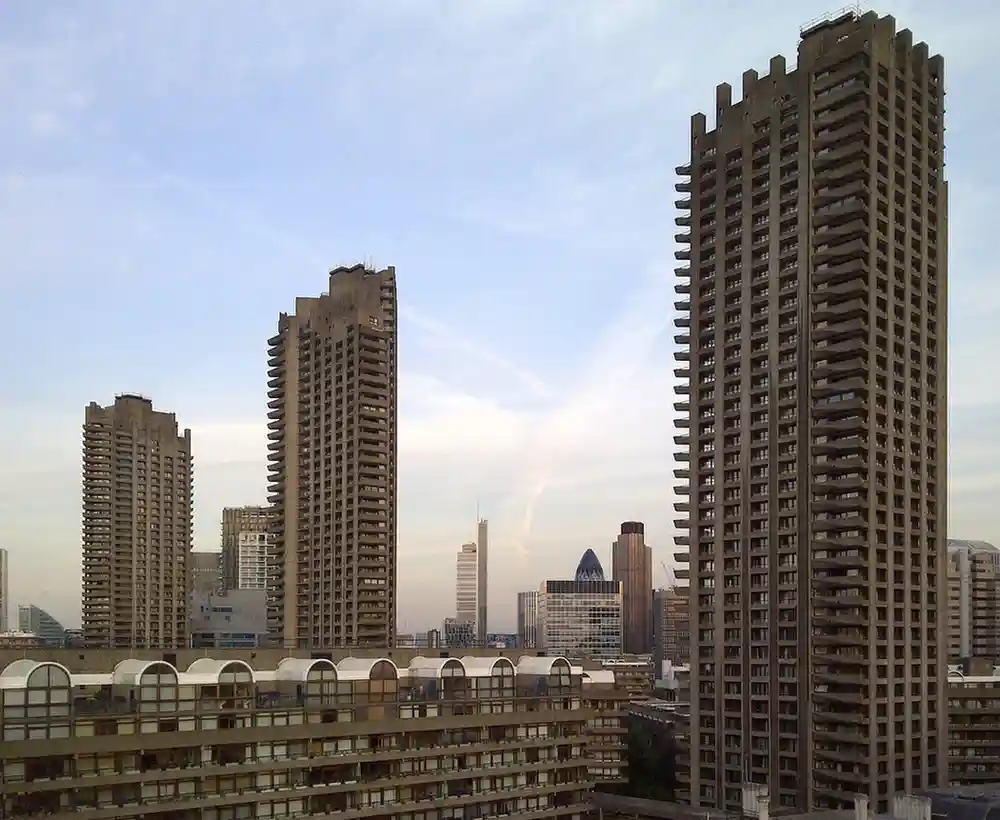
The Crown Jewel of Urban Living
The Barbican Estate stands as arguably London’s most successful brutalist housing development and cultural complex. Completed in 1982, this sprawling concrete city within a city represents the ambitious vision of architects Chamberlin, Powell & Bon. The estate seamlessly blends residential towers, cultural venues, and verdant gardens into one cohesive urban ecosystem.
What Makes Barbican Estate Exceptional
- Europe’s largest multi-arts center featuring theaters, galleries, and concert halls
- Distinctive fortress-like appearance with weathered concrete and geometric precision
- Beautiful raised gardens and water features creating surprising green oases
- Iconic residential towers including the famous Cromwell and Shakespeare towers
- Fascinating walkway system connecting the entire complex above street level
- UNESCO World Heritage consideration recognizing its architectural significance
2. Trellick Tower: West London’s Concrete Giant
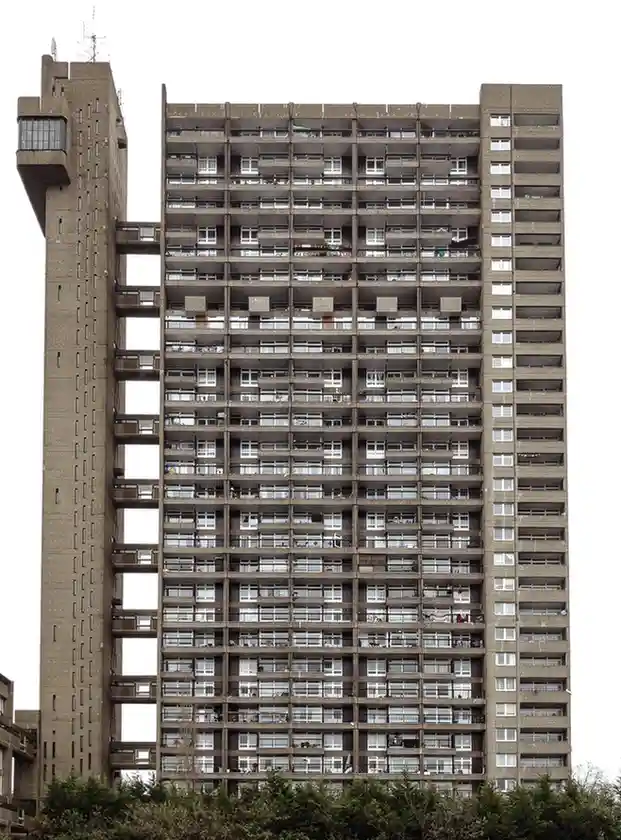
The Architectural Statement That Divides Opinion
Trellick Tower pierces the West London skyline with its unmistakable silhouette, designed by renowned architect Ernő Goldfinger in 1972. This 31-story residential tower showcases brutalism’s bold approach to social housing, featuring a distinctive service tower connected to the main structure by bridges at every third floor.
Highlights of This Iconic Structure
- Breathtaking panoramic views across London from its upper floors
- Unique dual-tower design with services separated from living spaces
- Grade II listed status protecting its architectural integrity
- Vibrant community atmosphere fostering strong neighborhood connections
- Controversial yet celebrated design inspiring countless architectural discussions
- Featured in numerous films and TV shows as an iconic London landmark
3. National Theatre: South Bank’s Cultural Fortress
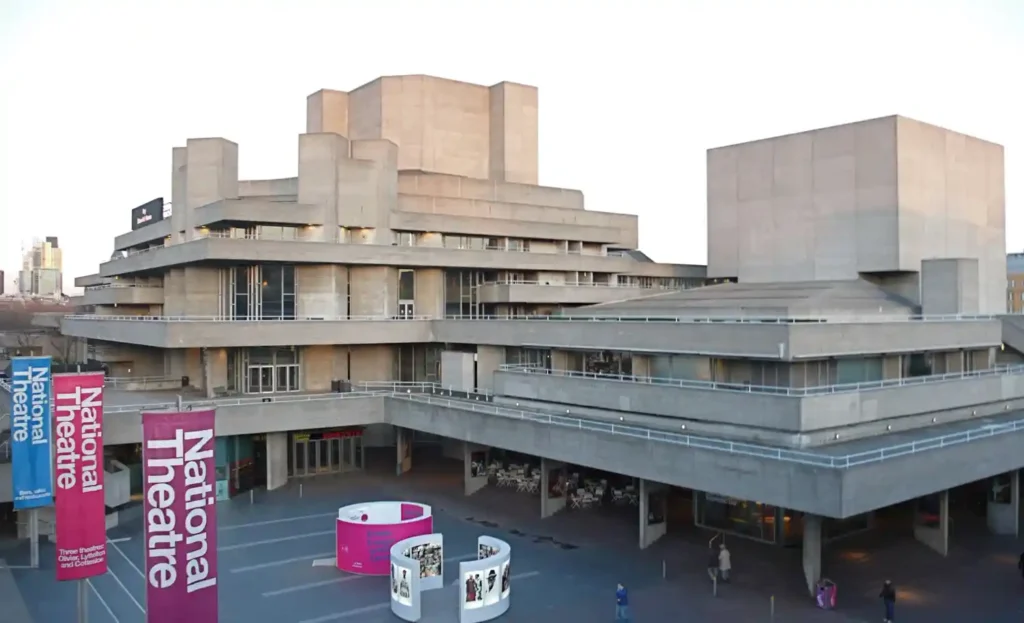
Where Performance Meets Architectural Drama
The National Theatre on London’s South Bank represents brutalism’s cultural ambitions perfectly realized. Designed by Sir Denys Lasdun and completed in 1976, this concrete complex houses three distinct theaters while creating dynamic public spaces that flow seamlessly into the surrounding urban landscape.
Architectural and Cultural Treasures
- Three world-class performance venues under one striking concrete roof
- Stunning terraced design creating multiple levels of public engagement
- Raw concrete exterior weathering beautifully along the Thames
- Innovative theater technology housed within brutalist structural systems
- Vibrant public spaces including bookshops, restaurants, and exhibition areas
- Grade II listed protection* recognizing exceptional architectural merit
4. Park Hill Estate: Sheffield’s Revolutionary Housing Vision
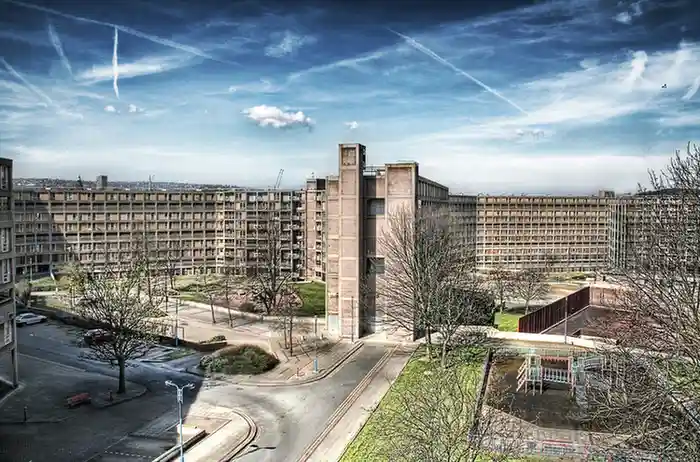
The Streets in the Sky Concept
Park Hill Estate in Sheffield revolutionized social housing design when it opened in 1961. This massive development, designed by Jack Lynn and Ivor Smith, pioneered the “streets in the sky” concept with wide corridor-balconies connecting different sections of the complex, maintaining community interaction within high-rise living.
What Sets Park Hill Apart
- Groundbreaking deck access system creating aerial neighborhoods
- Massive scale and ambition housing over 3,000 residents at its peak
- Colorful renovation program breathing new life into the concrete structure
- Grade II listed protection* as an architecturally significant landmark
- Mixed-tenure redevelopment balancing social and private housing
- Spectacular views over Sheffield from its elevated position
5. Preston Bus Station: Lancashire’s Concrete Cathedral
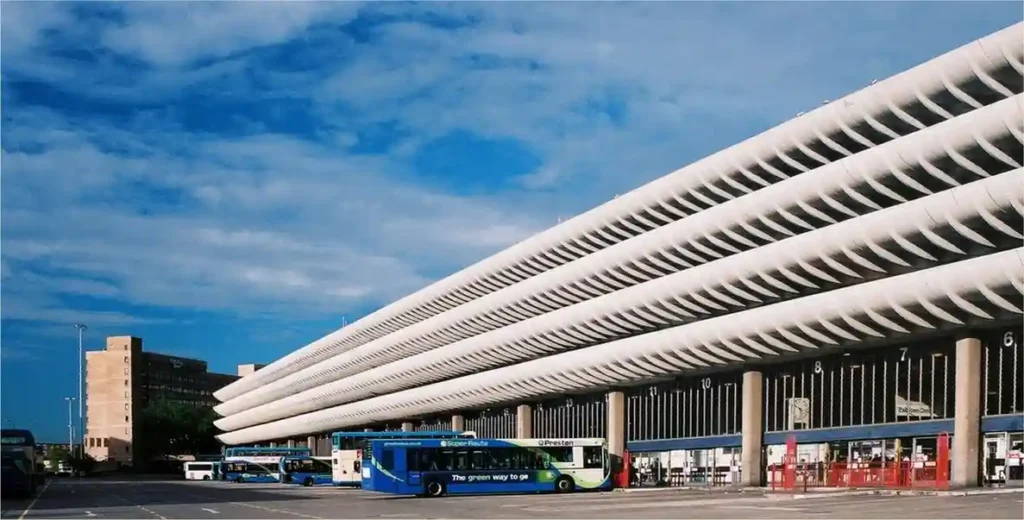
The Unexpected Beauty of Transport Architecture
Preston Bus Station transforms the mundane function of public transport into architectural poetry. Completed in 1969 by Building Design Partnership, this sweeping concrete structure creates a cathedral-like space for bus travelers, with its distinctive curved roof and repetitive concrete elements forming an almost musical rhythm.
Remarkable Features of This Transit Hub
- Stunning curved concrete roof creating dramatic interior spaces
- Rhythmic architectural repetition producing hypnotic visual effects
- Grade II listed recognition celebrating its architectural innovation
- Functional beauty proving that utilitarian buildings can be inspiring
- Photogenic qualities attracting architecture enthusiasts and photographers
- Ongoing preservation efforts maintaining its concrete splendor for future generations
Something to Consider About Brutalist Architecture
These magnificent concrete structures represent more than just architectural styles—they embody social aspirations, urban planning innovations, and artistic visions that continue shaping British cities today. Whether admired or criticized, brutalist buildings across the UK demonstrate architecture’s power to provoke emotion, foster community, and create lasting cultural impact.
The Enduring Legacy of British Brutalism
Britain’s brutalist buildings stand as bold testaments to an era of architectural experimentation and social optimism. These concrete giants continue inspiring new generations of architects, artists, and urban dwellers who appreciate their uncompromising honesty and monumental presence. From the cultural richness of the Barbican to the transport elegance of Preston Bus Station, these structures prove that beauty can emerge from the most unexpected materials and functions.
Also read: 5 Striking Buildings of Soviet-Era Brutalism You Must See
